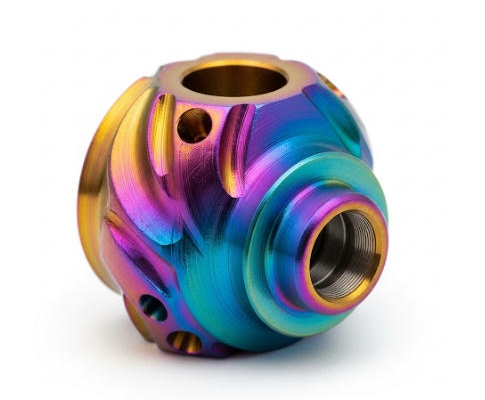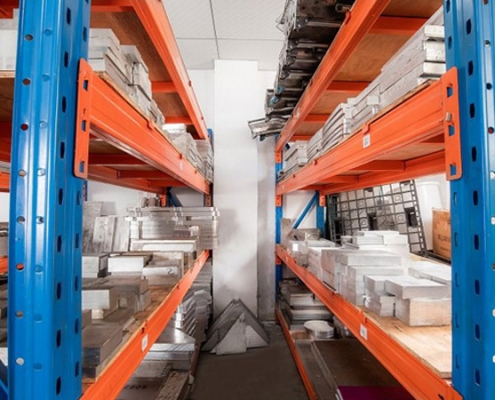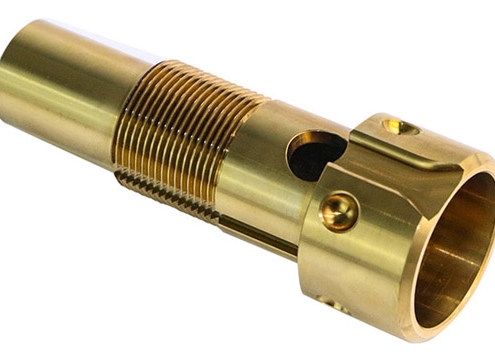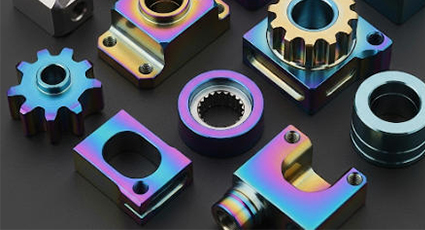Electrolytic Coloring: A Comprehensive Guide
Many manufacturers face challenges when choosing a surface finishing method. A poor decision can damage both performance and appearance, leading to wasted costs and dissatisfied customers. Electrolytic coloring solves this problem by delivering stable, attractive, and long-lasting finishes for critical components.
Electrolytic coloring is an electrochemical process that modifies the surface of metals by depositing ions within an anodized oxide layer. This results in durable colors that resist corrosion, improve wear performance, and enhance the overall aesthetics of parts. Widely used in aluminum, stainless steel, and titanium, it is essential for industries requiring both high precision and superior finishes.
Now let’s explore electrolytic coloring in detail, from its working principles to its role in modern CNC machining applications.
What Is Electrolytic Coloring?
Electrolytic coloring is a specialized surface finishing process that builds on anodizing technology. After anodizing creates a porous oxide layer, metallic ions are deposited into these pores through alternating current. Unlike conventional dyes that can fade under UV exposure, this process produces colors that are deeply embedded and highly resistant to environmental damage.
For example, in aluminum CNC parts used in consumer electronics, electrolytic coloring delivers the sleek, uniform appearance that brands demand while ensuring the surfaces resist fingerprints, scratches, and corrosion.
How Does Electrolytic Coloring Work?
The process can be divided into three distinct stages: anodizing, coloring, and sealing.
| Step | Description | Key Control Factors |
|---|---|---|
| Anodizing | Creates a porous oxide layer on the part surface | Electrolyte type, voltage, time |
| Coloring | Deposits metallic ions into the oxide pores | Current density, frequency, electrolyte concentration |
| Sealing | Closes the pores to lock in the color | Temperature, sealing solution, duration |
In the coloring stage, alternating current is applied in an electrolyte bath containing salts such as nickel or tin. The ions penetrate into the oxide pores and alter light interference within the layer, producing stable hues that range from bronze and champagne to black.
Consistency is critical. Parameters such as current density and treatment duration must be tightly controlled. In modern CNC machining workshops, this control is supported by statistical quality tools like CPK monitoring, ensuring that every batch achieves uniformity.
What Materials Can Be Electrolytically Colored?
Not all metals are suitable for electrolytic coloring. This method mainly depends on whether a stable and controllable oxide film can be formed on the metal surface. The following are the main materials and characteristics that can be electrolytically colored:
Aluminum and Aluminum Alloys
The most common material for electrolytic coloring, aluminum produces stable shades from bronze to black through anodizing and metallic salt deposition. It is widely used in electronics, automotive trim, aerospace components, and precision CNC parts for both protection and aesthetics.
Stainless Steel
Stainless steel develops decorative colors through oxide-film interference, without dyes or coatings. The hues range from gold to blue and black, making it popular in architecture, watches, appliances, and other consumer goods.
Titanium and Titanium Alloys
Titanium can generate bright interference colors such as blue, green, purple, and gold by adjusting voltage during anodizing. Its durable, biocompatible finish is valuable in medical devices, aerospace parts, and jewelry.
Other Metals
Magnesium, niobium, and zirconium can be electrolytically colored, though with narrower applications. Niobium and zirconium behave like titanium, while copper alloys offer less control, making aluminum the dominant choice overall.
Advantages of Electrolytic Coloring
Electrolytic coloring provides both functional and aesthetic benefits compared to traditional finishing methods. By forming a controlled oxide layer on the metal surface, it enhances durability, maintains vibrant colors, and creates a uniform, high-quality appearance—all while being environmentally friendly. These advantages make it a preferred choice in industries where performance and premium aesthetics are equally important.
| Advantage | Description | Typical Applications |
|---|---|---|
| Corrosion Resistance | Forms a protective oxide layer that shields against moisture, salt, and chemicals, ensuring long-term durability. | Outdoor structures, automotive trim, aerospace components. |
| Wear Protection | Hardens the surface, reducing scratches, abrasion, and general wear, which extends part lifespan. | CNC machined parts, consumer electronics housings, mechanical components. |
| Color Stability | Produces UV-resistant shades that do not fade or discolor over time, even in harsh environments. | Architectural panels, decorative consumer goods, high-visibility aerospace parts. |
| Uniform Appearance | Ensures consistent, smooth, and high-quality finishes across surfaces, even on mass-produced items. | High-end electronics, luxury goods, architectural facades. |
| Eco-friendliness | Relies on inorganic electrolytes rather than organic dyes, reducing environmental impact and health risks. | Sustainable manufacturing, industries with strict environmental standards. |
How Does Electrolytic Coloring Compare with Other Surface Treatments?
Electrolytic coloring provides a unique balance between durability, aesthetics, and cost-effectiveness compared to other common surface treatments. Each method has its own advantages and limitations:
Anodized Dyeing
Anodized dyeing involves creating a porous oxide layer on the metal surface and filling it with organic dyes. While it allows for a variety of colors at a relatively low cost, the colors are less stable than electrolytic coloring. They tend to fade over time, especially under UV exposure or harsh environmental conditions, and the protective layer is less wear-resistant.
Painting or Powder Coating
Painting or powder coating applies a pigmented layer onto the metal surface, which is then cured to achieve adhesion. This method offers a wide range of vibrant colors, including complex and custom shades. However, it adds thickness to the part, which may affect tolerances in precision components, and the coating can chip, peel, or scratch during handling or use.
PVD Coating
PVD coating deposits thin metallic or ceramic films in a vacuum chamber, producing brilliant and highly durable finishes. It supports a broad range of colors and has excellent wear resistance. The main drawbacks are the high cost and complex processing requirements, making it less suitable for large-scale or low-budget production.
Electrolytic Coloring
Electrolytic coloring forms a controlled oxide layer on metals like aluminum, titanium, and stainless steel, depositing metallic salts to create stable colors. It combines corrosion resistance, wear protection, and precise dimensional control, making it ideal for CNC machining components. While its color palette is more limited than painting or PVD, it provides long-lasting, UV-stable finishes at a competitive cost.
What Factors Influence the Quality of Electrolytic Coloring?
The quality and consistency of electrolytic coloring depend on multiple interrelated factors. Careful control of each ensures vibrant, durable, and uniform finishes:
| Factor | Description | Impact on Quality |
|---|---|---|
| Base Material Quality & Surface Pre-Treatment | Composition, surface roughness, and cleanliness of metals; often involves CNC machining, polishing, or chemical etching. | Ensures uniform color, proper adhesion, and corrosion resistance; defects cause uneven or faded finishes. |
| Electrolyte Composition & Bath Conditions | Type of electrolyte, concentration, and bath temperature. | Controls oxide layer formation and color intensity; inconsistent conditions lead to hue variations or weak protection. |
| Electrical Parameters | Voltage, current density, treatment duration, and waveform control. | Determines oxide thickness and color depth; incorrect settings may cause over-oxidation or faint colors. |
| Operator Skill & Process Automation | Expertise, monitoring, and use of automated systems with statistical process control. | Ensures consistency across batches and reduces human error, critical for large-scale or precision parts. |
| Post-Treatment Processes | Sealing, polymer treatments, or additional finishing steps. | Enhances corrosion resistance and locks in colors; insufficient sealing can cause fading or wear. |
What Are the Applications of Electrolytic Coloring?
Electrolytic coloring is widely used in industries where precision, durability, and aesthetics are critical. Its combination of corrosion resistance, wear protection, and stable coloration makes it ideal for both functional and decorative components.
1. Consumer Electronics
Smartphone housings, laptop casings, tablets, and wearable devices benefit from sleek, vibrant finishes that resist scratching and fading. Electrolytic coloring allows for precise, repeatable results on mass-produced CNC machining parts while maintaining tight dimensional tolerances.
2. Medical Devices
Surgical tools, implants, and diagnostic equipment use electrolytic coloring for its corrosion resistance and biocompatibility. The process provides durable markings, color coding, and visual differentiation of instruments, improving both safety and usability.
3. Automotive Components
Interior trim, handles, gear knobs, and decorative elements gain both enhanced durability and premium aesthetics. Electrolytic coloring provides long-lasting color that withstands wear, friction, and exposure to sunlight and chemicals commonly found in vehicles.
4. Optics and Precision Instruments
Sensitive equipment such as cameras, microscopes, and measurement devices require stable finishes that do not interfere with optical or mechanical performance. Electrolytic coloring provides uniform, durable coatings without affecting precision tolerances or component function.
5. Aerospace and Aviation
Aircraft components, control panels, and lightweight structural parts use electrolytic coloring for corrosion resistance, UV stability, and visual differentiation. This ensures both functional reliability and visual identification in high-performance environments.
In Conclusion
Frequently Asked Questions About Electric Coloring
What is Electric Coloring of Metal?
Electric coloring of metal, also known as electrolytic coloring, is a process where an electric current is applied to a metal surface in an electrolyte, forming a colored oxide layer. It enhances corrosion resistance, wear performance, and aesthetic appearance, commonly used on aluminum, stainless steel, and other anodizable metals.
What is the Electro Coloring of Titanium?
Electro coloring of titanium uses electrochemical oxidation to produce vibrant, stable colors on titanium surfaces. By controlling voltage and current in an electrolyte, a titanium oxide layer forms, creating colors from blue to purple without dyes. This method is widely applied in medical devices, aerospace, and decorative components.
What is the Term for Using Electric to Change the Color of Metal?
The term is electrolytic coloring or electrochemical coloring. It refers to applying an electric current to anodized metal in a specific electrolyte, resulting in a stable colored oxide layer that improves durability, corrosion resistance, and aesthetic appeal.








-80x80.jpg)